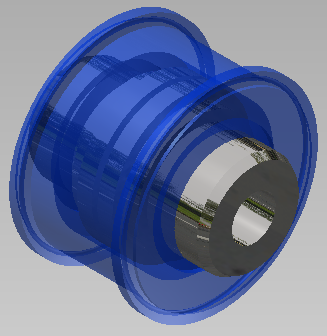A Practical Guide to Mechanical Shaft Coupling Selection

In the world of power transmission, selecting the right shaft coupling is crucial for ensuring reliable and efficient operation of mechanical systems. This guide walks you through a systematic approach to coupling selection, complete with a real-world example.
Essential Considerations for Coupling Selection
Before diving into calculations, engineers need to gather six key pieces of information:
Power Source Specifications
- Power rating (HP or kW)
- Operating speed (RPM at minimum speed under load)
- Type (electric motor, engine, etc.)
Driven Equipment Details
- Equipment type and operating characteristics
- Load classification
- Operating cycle
Shaft Configuration
- Shaft diameters and keyway dimensions
- Required fit types (clearance or interference)
- Material specifications
Installation Requirements
- Between-shaft-ends (BSE) distance
- Space constraints
- Accessibility for maintenance
Environmental Factors
- Operating temperature
- Exposure to chemicals or contaminants
- Indoor/outdoor installation
A Step-by-Step Selection Process
Let's walk through a practical example of selecting a grid coupling for connecting an electric motor to a rotary lobe compressor.
The Application Specifications
Motor: @
Driver Shaft: diameter with square key
Driven Shaft: diameter with key
Shaft Length: long (both shafts)
BSE Gap:
Step 1: Torque Calculation
The fundamental formula for torque calculation is:
T = P / (2π × n)
where:
T = Torque
P = Power
n = Speed (RPM)So we can calculate the Application Torque
Step 2: Service Factor Consideration
Service factors account for real-world operating conditions:
- Base factor for rotary lobe compressor:
- This factor considers:
- Load variations
- Start/stop frequency
- Operating environment
Step 3: Selection Torque Determination
Selection Torque = Application Torque × Service FactorThen we calculate the selection torque as: .
Step 4: Final Selection Process
With the selection torque calculated, consider:
- Coupling size based on torque capacity
- Bore capacity for shaft dimensions
- Speed rating vs. application speed
- Physical size constraints
- Maintenance requirements
Pro Tips for Coupling Selection
Always Round Up: When selecting coupling size, choose the next larger size if your calculations fall between standard sizes.
Consider Future Needs: Factor in potential power increases or system modifications.
Maintenance Access: Ensure adequate space for installation and maintenance.
Documentation: Keep detailed records of selection criteria for future reference.
What challenges have you encountered in coupling selection? Share your experiences in the comments below.
#MechanicalEngineering #PowerTransmission #Engineering #IndustrialDesign #Manufacturing
